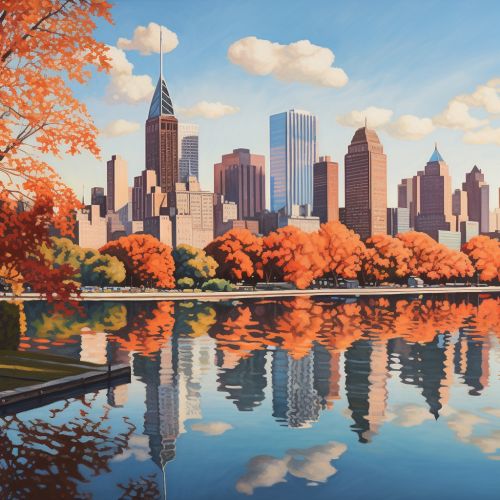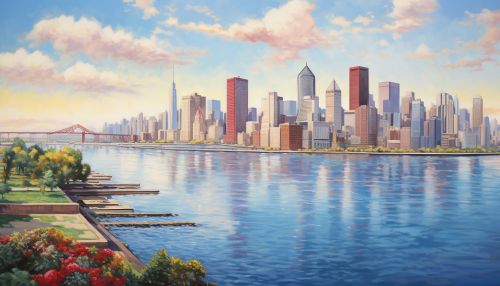New York City
Geography
New York City is located in the Northeastern U.S., in southeastern New York State, approximately halfway between Washington, D.C. and Boston. The location at the mouth of the Hudson River, which feeds into a naturally sheltered harbor and then into the Atlantic Ocean, has helped the city grow in significance as a trading city.


Boroughs and neighborhoods
The city is divided into five boroughs, each of which is a separate county of New York State. The five boroughs – Brooklyn, Queens, Manhattan, The Bronx, and Staten Island – were consolidated into a single city in 1898. Each borough is coextensive with a respective county of New York State. The boroughs of Queens and The Bronx are concurrent with the counties of the same name, while the boroughs of Manhattan, Brooklyn, and Staten Island correspond to the counties of New York, Kings, and Richmond, respectively.
History
New York City traces its origins to a trading post founded by colonists from the Dutch Republic in 1624 on Lower Manhattan; the post was named New Amsterdam in 1626. The city and its surroundings came under English control in 1664 and were renamed New York after King Charles II of England granted the lands to his brother, the Duke of York. New York served as the capital of the United States from 1785 until 1797.
Economy
New York City is a global hub of business and commerce, as a center for banking and finance, retailing, world trade, transportation, tourism, real estate, new media, traditional media, advertising, legal services, accountancy, insurance, theater, fashion, and the arts in the United States.
Demographics
With a population of 8.3 million in 2020, New York City is the most populous city in the United States. People from over 180 countries live in the city and speak over 800 languages, making it the most linguistically diverse city in the world.
Culture
New York City's food culture includes an array of international cuisines influenced by the city's immigrant history. The city is also home to many of the finest and most diverse artistic and cultural institutions in the world, including the Metropolitan Museum of Art, the Museum of Modern Art, and the American Museum of Natural History.
Transportation
New York City's comprehensive transportation system is the most extensive in North America. The New York City Subway is the largest rapid transit system in the world by number of stations.
Education
New York City is home to such notable private universities as Columbia University and New York University, while the public City University of New York system is one of the largest in the country.
